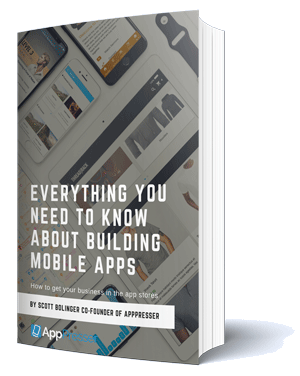Creating Blog Content: Tips for Getting Inspired

There’s nothing worse than clicking, “Add New Post,” and staring down that blinking cursor on a blank background, saying to yourself, “Oh crap. What the heck am I gonna write about?” One of the places people tend to get stuck when it comes to creating blog content is the very first step: What do I even put here?
I don’t know how many times I’ve had a conversation with someone about how stymied they are regarding the kind of content they should put on their company blogs; they love what other people are doing, but are completely stuck when it comes to their own. Who is going to find their thoughts interesting anyway? Hasn’t everything been done already?
Well, maybe everything has been done, but has it been done with your particular flavor, geared toward your unique audience? Probably not. Just like when you are telling your company’s story, where you come from and your goals, perspective, and experience add a personal twist that is all your own.
Here are a few places to get inspiration on what to write:
Frequently Asked Questions
This is an easy place to start! What are the common questions you get–either from customers, industry outsiders, or beginners who want to do what you do?
Even if it’s a very basic question, it can still be useful to cover on your blog–just because someone else has covered it doesn’t mean your customers have found the answer. By putting it on your site, you’re making it accessible to your audience and making answering the question a whole heckuva a lot easier in the future–all you have to do is link to it!
Over at WebDevStudios, some of our basic posts have been surprisingly popular–our post addressing one of the most common questions in the WordPress world got a surprisingly good response, despite the fact that it is a question that has been covered to death. People still found value in our breakdown, even though to seasoned WordPressers, this seems like pretty straightforward stuff.
Remember: Things that may seem too obvious to you may not be that obvious to your audience; those subjects or questions seem obvious to you because of your own expertise. You can get perspective on what rad newbies want to know by paying attention to the kinds of questions they’re asking–and create content that addresses that.
Educational Experiences
Whether it’s a technical tutorial or business development, you can draw from your own mistakes and experience to serve as an educational resource. If you’ve been in an industry for several years and you’re running a company that is successful (and knock it off, Imposter Syndrome sufferers! If your business is sustaining and you’re living off of it, you’d better believe you know more than you might think you do!), you have something valuable to contribute.
Scott recently did this when he talked about things he wish he knew when going into selling products; he drew from his own extensive business experience and turned it into a teaching opportunity. He started with a simple premise: What do I wish I had known and what did I learn from my mistakes?
Here are some other starter questions:
- What is something I learned the hard way? What was the hard way–and what was the easy way?
- What is a common misconception about this industry/my business/what I do?
- What tools in your tool kit (figuratively OR literally) feel basic and fundamental to you, but aren’t something you knew about initially?
- What particular skill set took research and time to develop? How did I go about that? Was it through a formal program, or something totally autodidactical?
Take a few of these questions, write them down, and brainstorm–write every possible answer to the questions, even though you might think some of the answers are dumb or useless. It’s ok! Brainstorms are never the final product–and the more you get out of your head, the more you’ll find inspiration. One idea will lead to two more, and you’ll find that you have more than enough to expand into something impressive and useful.
Topical Coverage — Informed by Your Expertise
Every industry has its news–and its gossip. While I don’t recommend getting in too deep with the latter, there’s still a way to transform industry chatter into solid, engaging content.
Think about the last five articles you read that covered breaking news in your industry. Think about the last five articles you sent to a colleague with a note about your own opinion–good, bad, or otherwise. Why was that article worth sharing to you? Did you have a different take than the author? Do you feel like the author left something related to the subject unaddressed?
If something recent has stirred up your own thoughts about what’s going down, put them to paper! If someone is paying you to do this work, and you are actively working in your industry, you have something to contribute to the conversation.
Creating content for your company blog can be intimidating. Writing is the act of committing your thoughts to paper–thoughts that may be changeable, thoughts that may not be as well-thought out as you’d like them to be, thoughts that feel vulnerable to share in such a permanent way. With a little common sense and a spirit of generosity (and humility), you can wield your awesome brain and your experience as an incredible tool. Yes, you have to open up to the idea that someone may disagree with you–maybe they have a perspective you just haven’t considered! That’s okay! Content should not only be about imposing yourself as an expert, but about starting a conversation–and relying on it as a collaborative process between you and your audience.
Where else have you found inspiration? What did I miss? I’d love to hear about your brainstorming process!

